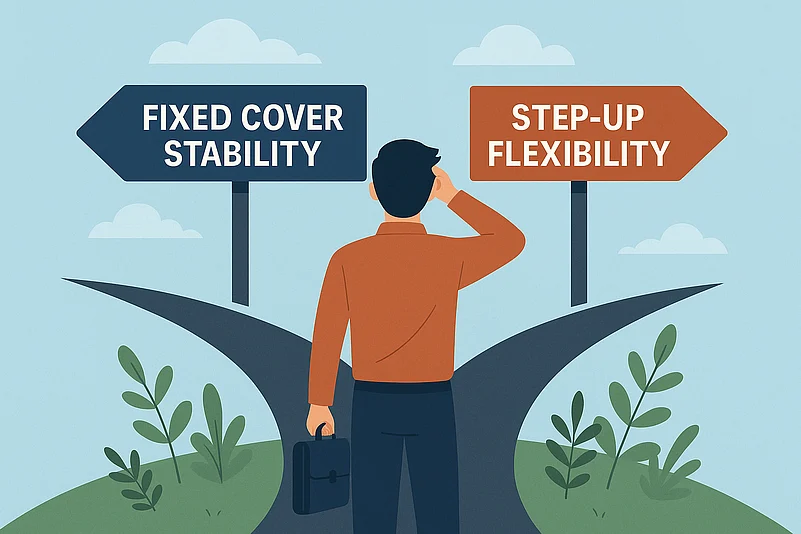
Summary of this article
Step-up term plans increase coverage to tackle inflation and life changes.
Fixed-cover term plans offer stable premiums but risk underinsurance over time.
Step-up premiums start lower, rising with coverage growth across policy years.
Combining fixed and step-up cover can balance stability and flexibility.
When buying term insurance, you can buy a plan with a fixed sum assured, or you can buy term insurance where the coverage increases with time.
Both options have their pros and cons. Increasing coverage under term plans in a structured way by a fixed percentage or amount takes care of inflation, avoids additional medical underwriting requirements, and matches the needs of different life stages. However, it's got cost implications for increasing the sum insured. ‘Traditional fixed cover term plans provide lower and set premiums and fixed structures, although they come with a risk of underinsurance and inflation-related risks,’ says Gautam B. Boda, group vice chairman, JB Boda group.
Step-Up Or Standard: Premium Check
Premiums under step-up plans are lower initially since the sum assured is comparatively lower during the initial stages, whereas premiums are higher initially under a standard term plan since the sum assured tends to be higher. During the policy tenure and lifetime premiums, for step-up plans, the premiums are higher since they cover higher sum assureds due to periodic increases over the years.
Level-term plans are simpler. You choose your cover amount at the start, and your premium stays the same for the whole term. ‘Easy to plan for, no surprises. But if you later realise you need more coverage, you’ll have to buy another policy at the rates for your age and health at that time, which could be much more expensive,” says Shubham Gupta, CFA, co-founder, Growthvine Capital, a wealth management firm.
Should You Opt For Step-up Plans
“Step-up cover is very helpful for people who are unable to start with higher budgets and handle cost increments in the future years, also taking care of inflation and life cycle changes,” says Boda.
It really depends on where you are in life, how your income is likely to grow, and what responsibilities you have on your plate. “If you know your expenses are going to keep climbing, things like raising kids, upgrading your lifestyle, and keeping up with inflation, then an increasing-coverage plan can be worth paying a bit extra for. Your coverage grows automatically, so your family’s protection keeps pace with your life, and you don’t have to keep checking and adjusting it every few years,” says Gupta.
If you’re the kind of person who likes to plan and can work out how much cover you’ll need for the long haul, a fixed-cover plan bought early might give you better value in the end. Of course, you don’t have to stick to just one option. “A good compromise is to start with a strong level-term base and add a smaller increasing-coverage rider. That way, you get the stability of fixed cover with the flexibility to keep up with inflation and life’s surprises,” says Gupta.










